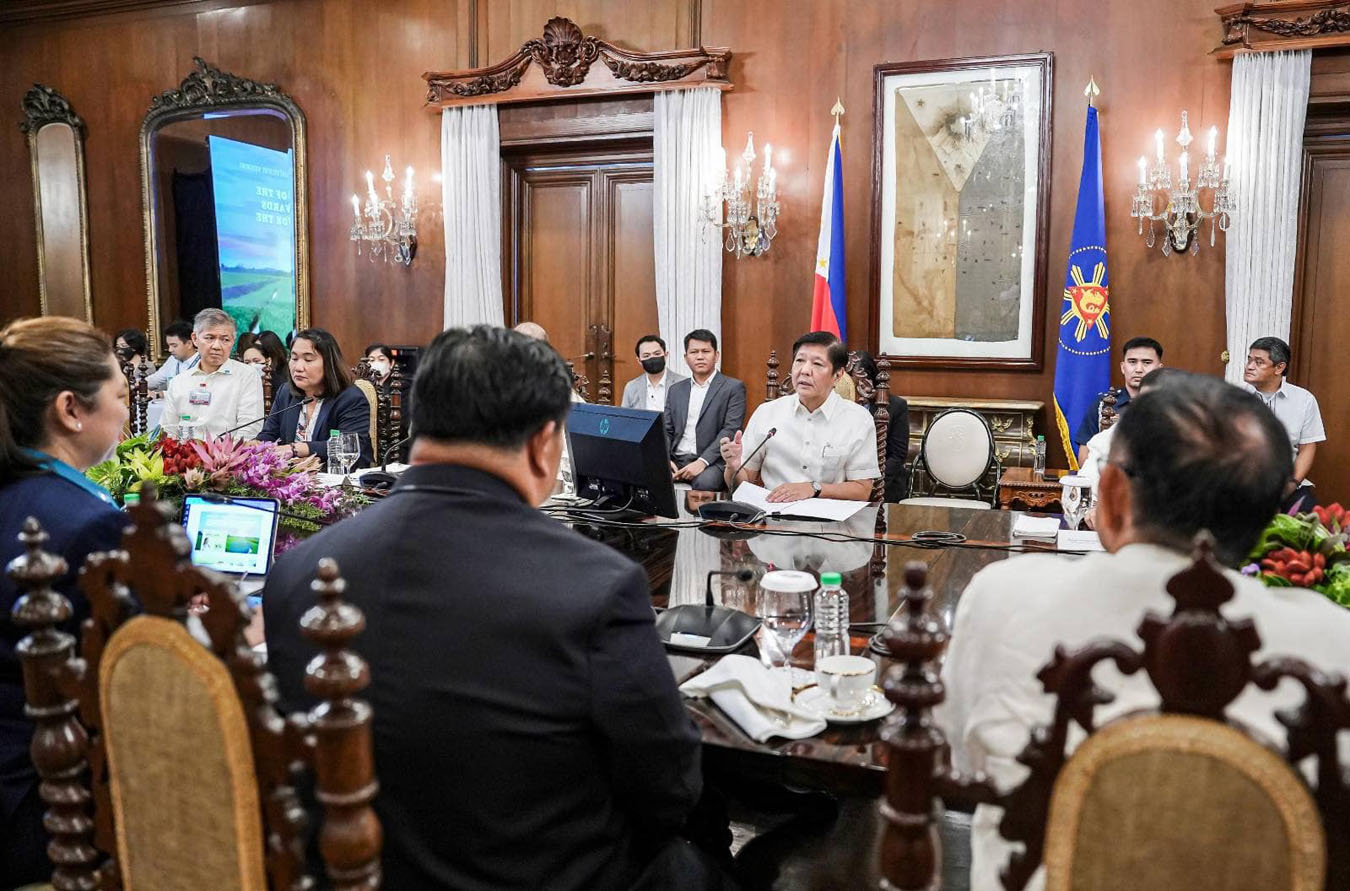
President Ferdinand R. Marcos Jr. wanted all agricultural lands in the country to undergo geomapping to establish soil maps for specific agricultural products to ensure increased yield and improve farmers’ income.
Marcos issued the order during a meeting with the Philippine Rice Industry Stakeholders Movement (PRISM) in Malacañang on Wednesday.
According to the President, the government is already using geomapping in resolving titling issues to boost agricultural production and increase the income of farmers.
“Iyong sa geomapping, actually ginagamit na namin ang mapa ng BIR (Bureau of Internal Revenue) at saka NAMRIA (National Mapping and Resource Information Authority). We are putting together everything kasi mahirap naman ipa-survey lahat. So, para alam na natin ‘yung mga areas and it started also with irrigation, sa NIA,” Marcos said in the meeting.
“So from that, ‘yung titling problem na sinasabi natin, magiging mas madali. But at least ma-define na natin ‘yung mga parcels of land and, in that way, alam na natin. So, kung maalis na natin ang titling problem, mas madali na lahat.”
According to an online source, geomapping “is the process of converting raw data from surveys into a geomap that helps by providing a visualization of the location of utilities quickly and accurately.”
PRISM raised several concerns during the meeting although, based on the discussions, many of those challenges could readily be addressed by the current government interventions and programs.
Among these concerns are high cost of rice production and limited market access, limited access to capital investment, adverse BIR policies, lack of extensive irrigation system and climate crisis-El Niño threat, and slow adoption of vital rice production technology.
Unavailability and lack of access to real-time data, misaligned programs and activities across agri-related government agencies, inconsistent consultative meetings among the various rice stakeholders, and rice smuggling were also among the identified roadblocks to higher productivity.
Existing government interventions addressing these concerns include the implementation of Farm and Fisheries Consolidation and Clustering program (F2C2), provision of various support services including credit and financing by the DA and the Land Bank of the Philippines, and establishment of climate-smart agriculture infrastructure.
The administration is also formulating the National Agricultural and Fisheries Modernization and Industrialization Plan and other plans, in consultation with other stakeholders, to guide the development of the agriculture and fisheries sectors.
It is also utilizing information technology to gather, analyze, and use data for food production such as the Smarter Approaches to Reinvigorate Agriculture as an Industry in the Philippines or SARAI, and has been conducting regular meetings conducted by the National Convergence Initiative for Sustainable Rural Development.
The recalibration of importation schedule is also being carried out to protect local farmers and industries. The government is also studying the requirements of the proposed pre-shipment inspection system by the Department of Finance (DOF), DA, and other government agencies, and the DA is also conducting a review of the Rice Tariffication Law (RTL) and its implementing rules and regulations (IRR).
Clustering, low soil fertility, mill modernization and improved milling process were also discussed during the Palace meeting.
Founded in 2019, PRISM is composed of multisectoral groups involved in the rice industry value chain.
Its goal is to address the fragmented government approach in addressing issues and help protect the interests of all stakeholders, from the farmers to the consumers.
The President met with the members of the PRISM in Malacañang Palace and discussed the status of the Philippine rice industry, issues and concerns of the stakeholders, and possible ways forward. *(PND)*

